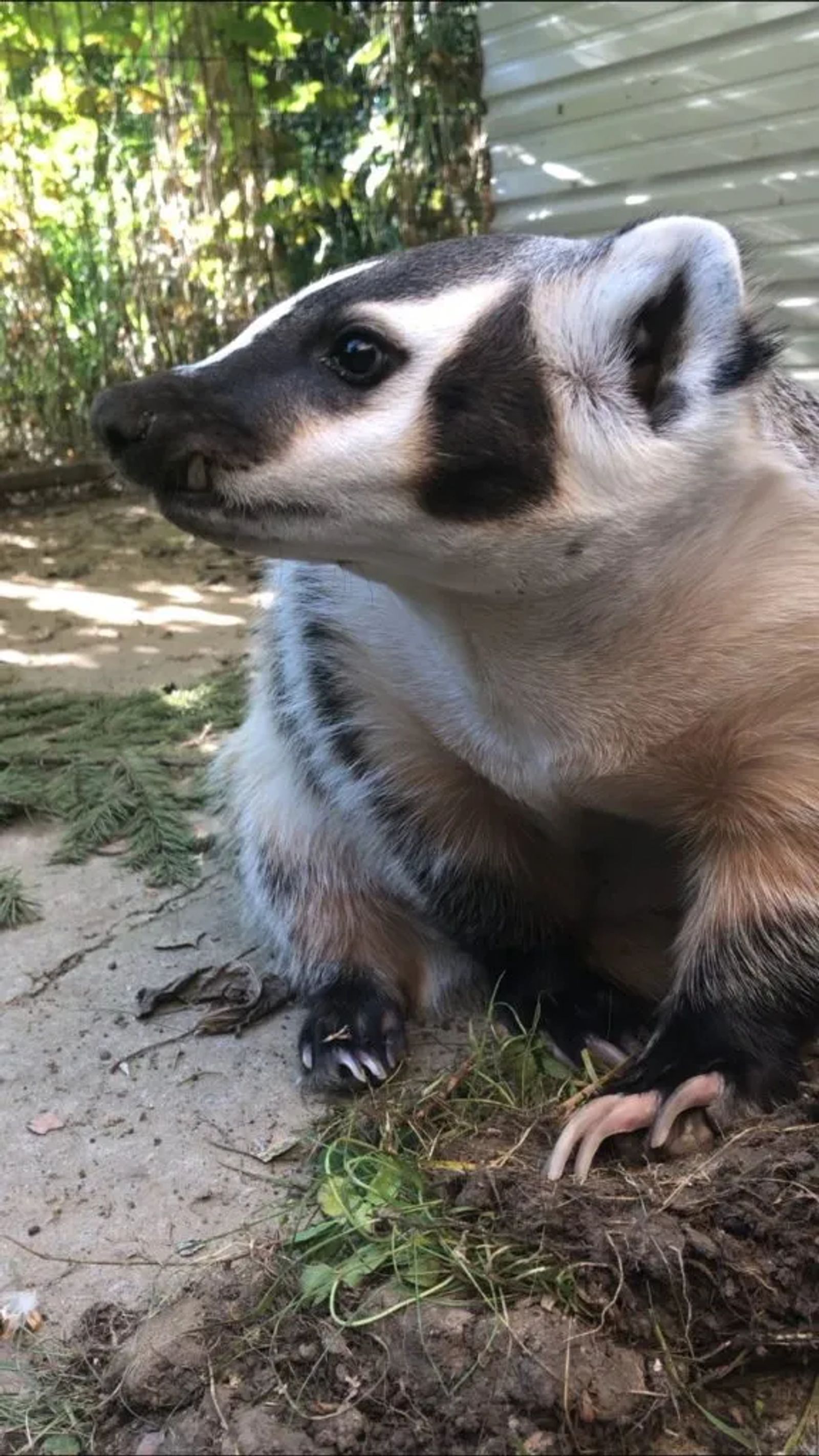
American Badger
Taxidea taxus
Badgers are found primarily in the Great Plains regions of North America: north through central western Canada throughout the western United States, and south through the mountain areas of Mexico. In these areas, badgers are known for digging multiple large dens in the ground up to 10 feet deep thanks to their long and strong claws. In addition to long claws, they have a more flattened body and short, stocky legs with iconic coloring. Their fur is a whitish grey that may also appear reddish, with black face patterns and black paws. They are a part of the Mustelid family which also includes otters, minks, wolverines, ferrets (which we also have at the zoo), and other weasels. Mustelids are known for being a diverse group of carnivore mammals and can be very intense for their size.
Click HERE for a Badger Activity Sheet!
Our Current Resident
Uki, Female - Born May 1, 2018
Uki was found as a young cub with her mother, who had already passed. Orphaned, she was brought to the Wildlife Center of Montana in Helena, Montana, where she was raised. Due to a lack of space, she was donated to ZooMontana in July 2019.
Uki will not be visible to the public from late fall to mid spring. During this time, American badgers will typically burrow deep and enter into a state of torpor, much like bears. To ensure her safety during this time, our Caretaker Team brings her indoors for the season.
Taxonomy
- Kingdom: Animalia
- Phylum: Chordata
- Class: Mammalia
- Order: Carnivora
- Family: Mustelidae
- Genus: Taxidea
- Species: Taxidea taxus
Animal Facts
Carnivore: mainly meat including squirrels, rats, mice, and gophers
Population Status (according to IUCN): currently listed as Least Concern
Montana Population Status (according to Montana Field Guide): currently listed as Apparently Secure
Habitat: dry, open grassland, fields, and pastures at all different altitudes
Activity: nocturnal- mostly active during the night



















































